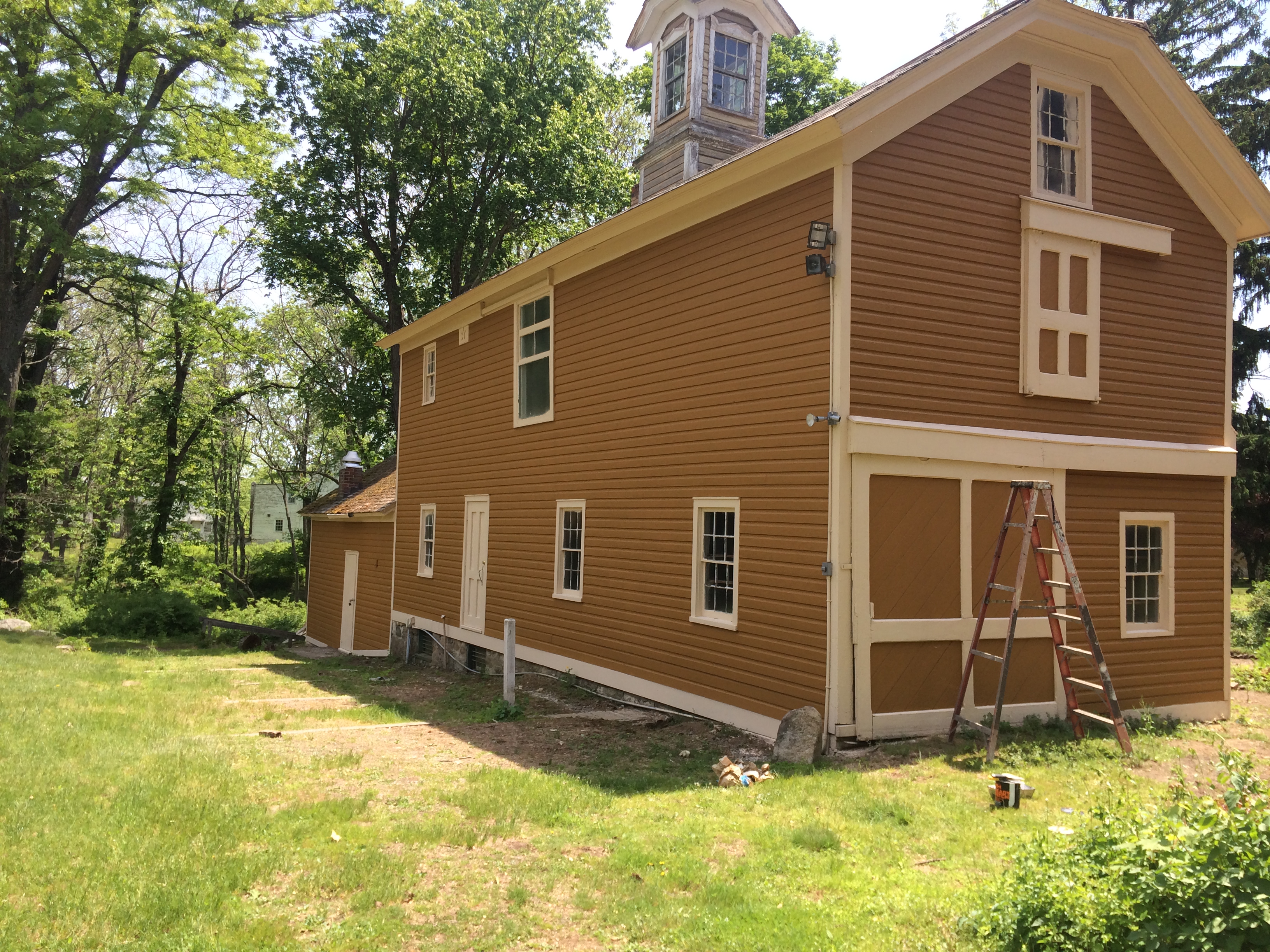Maintaining the Legacy of New Jersey’s Architectural Treasures
New Jersey is rich with history, its story told through the diverse architecture lining the streets of towns like Red Bank and across the state. From colonial-era homes to Victorian masterpieces and early 20th-century commercial buildings, these structures are more than just properties; they are tangible links to our past. Preserving their integrity requires a specialized approach, especially when it comes to painting. Historic painting is a craft that balances modern technology with historical accuracy, ensuring these landmarks survive for future generations to admire.
Unlike a standard residential or commercial project, historic restoration painting demands a deep understanding of period-specific materials, color palettes, and application techniques. It’s about more than just a fresh coat of paint; it’s about meticulous preservation that respects the building’s original character. For property managers and homeowners entrusted with these treasures, partnering with experienced contractors is essential for a successful, authentic, and lasting result.
The Unique Challenges of Painting Historic Buildings
Approaching a historic building with a modern mindset can lead to irreversible damage. These structures present unique challenges that require careful planning and expert execution. A professional painting contractor must navigate these complexities to protect the building’s fabric and legacy.
1. Surface Preparation and Material Integrity
Decades, or even centuries, of exposure to New Jersey’s varied climate can take a toll. Surfaces may feature layers of old paint, weathered wood, or delicate plaster. Improper preparation, such as aggressive sandblasting or using the wrong chemical strippers, can destroy original details. A careful assessment is needed to determine the most gentle and effective method, whether it’s hand-scraping, low-pressure washing, or specialized media blasting for robust surfaces like steel.
2. Lead Paint Abatement
Buildings constructed before 1978 often contain lead-based paint, a significant health hazard. Safe removal and containment are not just best practices; they are legal requirements. Certified professionals must follow strict EPA protocols to ensure the safety of workers, occupants, and the surrounding environment. This process is a critical first step in any historic painting project.
3. Historical Accuracy in Colors and Finishes
Choosing the right colors is paramount to maintaining authenticity. Historic color palettes were often derived from natural pigments, resulting in different tones and finishes than what is common today. A true restoration involves researching the building’s era to select period-appropriate colors. Sometimes this involves careful paint chip analysis to uncover the structure’s original hues. The goal is to honor the architect’s original vision, not impose a modern aesthetic.
Benefits of Professional Historic Painting Services
Investing in a qualified team of commercial painting contractors with historic preservation experience provides both tangible and intangible returns. It’s an investment in the longevity and value of your property.
Protecting Property Value
A well-maintained historic property is a significant asset. Proper restoration enhances curb appeal and market value while preventing the costly deterioration that can result from neglect or improper techniques.
Ensuring Structural Longevity
A high-quality paint job is a building’s first line of defense against the elements. Modern coatings formulated for historic materials, such as waterproofing and fire-retardant paints, can protect against moisture, rot, and other environmental threats without compromising the building’s historic character.
Navigating Regulations
Many historic properties in New Jersey are subject to local or state preservation ordinances. Experienced contractors understand how to work within these guidelines, ensuring all work is compliant and that necessary permits and approvals are obtained.
A Local Focus: Historic Preservation in Red Bank, NJ
Red Bank and the surrounding Monmouth County area are home to a stunning collection of historic buildings. From the grand Victorian homes on the Navesink River to the charming commercial storefronts downtown, preserving this local character is vital. When considering a project, whether it’s for your home or a commercial property, hiring a contractor with local experience is key. A team that understands the specific architectural styles and environmental factors in Red Bank can provide a tailored approach that respects the community’s heritage.
Whether you’re looking for an exterior repaint service for a historic house or a full restoration of a commercial facade, choosing a contractor rooted in New Jersey ensures a deeper appreciation for the project’s historical context. Since 1989, Spectra Painting has been committed to delivering high-quality results across the state, bringing a wealth of local knowledge to every job.
Did You Know?
The composition of historic paint is vastly different from modern latex or acrylic formulas. Early paints often used binders like linseed oil and pigments from minerals and plants. Replicating these historic finishes requires specialized knowledge to achieve an authentic look that also provides modern durability. Furthermore, some specialized techniques, like electrostatic painting, can be used to restore original metalwork with a factory-like finish, preserving intricate details on fences, railings, and fixtures.
Ready to Restore Your Property’s Historic Charm?
Your historic property deserves the care and expertise of a dedicated professional. At Spectra Painting, we combine decades of experience with a passion for preservation. Contact us to discuss your historic painting project in New Jersey and receive a free, no-obligation quote.
Frequently Asked Questions
How do you determine the original color of a historic building?
We use a combination of methods, including historical research of the period and architectural style, along with physical paint analysis. This can involve carefully sanding down small, inconspicuous areas to reveal underlying layers of paint. This forensic approach helps us identify the original color schemes with high accuracy.
Are modern paints safe for historic wood and plaster?
Yes, when the right products are selected. We use high-quality modern paints that are breathable, allowing moisture to escape from older materials like wood and plaster. This is crucial for preventing peeling, blistering, and moisture damage. We avoid impermeable, plastic-like coatings that can trap moisture and accelerate decay.
What is the process for handling lead paint?
As an EPA Lead-Safe Certified firm, we adhere to strict safety protocols. The process involves sealing off the work area to contain dust and debris, using specialized equipment with HEPA filtration during paint removal, and ensuring proper disposal of all hazardous materials. The safety of our clients and our team is our top priority.
How long does a historic painting project typically take?
The timeline for a historic restoration project varies greatly depending on the size of the building, its current condition, the extent of surface preparation required, and weather conditions for exterior work. After an initial consultation and thorough site assessment, we provide a detailed project timeline along with our quote.






